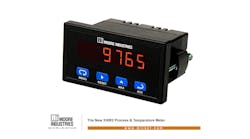NSF International and the Japan Water Purification Association (JWPA) are completing a jointly developed protocol to evaluate the ability of certain water filtration products to reduce iodine (including radioactive iodine) from drinking water. Once the protocol is complete, NSF says manufacturers can have their activated carbon, ion exchange, and reverse-osmosis water filtration technologies tested and certified to ensure effective iodine reduction.
NSF says it began developing the protocol with JWPA, at the request of water treatment systems manufacturers following the earthquake in Japan in March 2011, to help solve consumer confusion and provide a means to evaluate systems that reduce radioactive iodine. Manufacturers felt use of water systems certified to the protocol would provide consumers additional reassurance, NSF says. The international protocol will be known as NSF/JWPA Protocol P72 Drinking Water Treatment Units – Iodine Radioisotope Reduction.
In developing the protocol, a team of NSF scientists, JWPA technical committee members, and other experts developed test methods used to evaluate whether adsorptive and absorptive media, such as activated carbon, as well as reverse-osmosis, and ion exchange point-of-use water filtration technologies can effectively reduce iodine from water.
Once the protocol is complete, NSF says manufacturers will be able to have their products tested and certified by NSF International to ensure they effectively reduce iodine and help protect consumers.
To be an international protocol that can be applied to many regions of the world, the NSF/JWPA Protocol P72 requires that the system meet appropriate drinking water treatment country standards. For example for the U.S. market, the system also must meet the requirements of NSF/ANSI Standard 42: Drinking Water Treatment Units – Aesthetic Effects or NSF/ANSI Standard 53: Drinking Water Treatment Units – Health Effects for adsorptive or absorptive media and NSF/ANSI Standard 58: Reverse Osmosis Drinking Water Treatment Systems. For Japan, the requirements of the Japanese Industrial Standard (JIS) 3201: Testing Methods for Household Water Purifiers also must be met.

